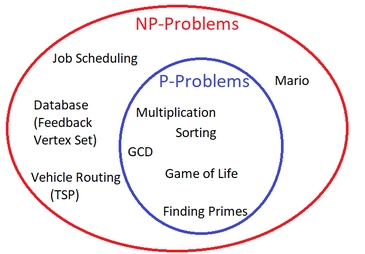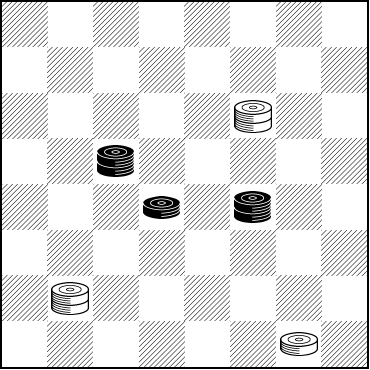The Checker Maven
Jump to navigationA Different Prize Problem

The P=NP problem in computer science is one of the Millennium Prize Problems and if you can solve it, you'll win a cool $1 million prize from the Clay Mathematics Institute. We won't attempt to explain the problem here but it certainly can be said to be at the ultra-difficult level. The prize is yet to be claimed.
Turning to checkers, we recently we presented Brian Hinkle's Prize Problem which carried with it an award of $100 (not $1 million) to the first correct solver. Alas, that reward went unclaimed. Today we have a different sort of prize problem. It was published back in 1907 in the Canadian Checker Player magazine. The prize was a six-month subscription to that excellent publication of bygone days, and the prize was indeed awarded to a successful correspondent.
We'll not claim that the problem is up to Brian's grandmaster composing standards, nor will we offer anything beyond personal satisfaction for finding the solution. But it's nevertheless an interesting composition.

WHITE
White to Play, What Result?
W:WK11,K25,32:BK14,18,K19
Would you have won a half-year subscription to one of history's best checker publications? We'd offer you a free six month on-line subscription to The Checker Maven but that wouldn't be much of a prize given that our publication is already free. So solve it just for the fun of it, and claim a look at the solution by clicking on Read More. If you like, write to us and tell us if you might have been a winner well over a century ago.![]()
Solution
This solution is due to the KingsRow computer engine.
32-27 14-17 25-21 17-22 11-7 22-26 7-10 26-30---A 10-14 18-22 14-18 22-25 18-22 25-29 21-17 30-25 22-26---B 25-22 27-23---C 22x31 23x16 Drawn.
A---26-31 loses to 10-14.
B---22-18 loses to 17-21.
C---Left here as a draw by the composer, whose solution tracks the computer solution perfectly.
It's interesting to read the historical account as published in the Canadian Checker Player
REPORT ON PRIZE PROBLEM NO . 4 , L. L. Granger in reporting the result of the competition on his Prize Problem No. 4 in November (1907) C. C. P., known as "A Little Mischief," awards the prize six month's subscription to the C. C. P. to C. L. Burr of Forest, Wash., whose solution was the first received that was approximately correct . Some fairly good play was sent in by Wm. Carr of Sydney Mines, Cape Breton; M. S. Fry of Rich Hill, Mo.; Ben Ward of Lazuna, N. M., E. R. Wiley of Thorp, Wis ., and James H. Fell of Baddow, Ont . Others , notably Theo . Bryden of Kansas City, Kan., seemed intent on finding a Black win .
Here follows Mr Granger's own analysis: Position: B-18, ks 14, 19; W 32, ks 11, 2; W to move and --- what? Solution: 32-27, 14-17, *25-21, 17-22, *11-7, a 22-26, *7-10, b - 26-30, g - 10-14, 18-22, h - 14-18, C - 22-25, *18-22, 25-29, *21-17 , 30-25, *22-26, 25-22, 27-33, Drawn.
(a) 19-15, 27-24 draws easily.
(b) 18-22, 27-23, Drawn.
(C) 22-26, 18-23 Drawn.
(g) 10-6 also draws.
(h) 14-10 also draws.
Mr. Granger has not found a sound win against 32-28 for first move, and thinks there may be also a draw for it, although he had held the opinion that 32-27 is a star move.
Of course, today we have powerful computers, and KingsRow easily finds that 32-28 will also lead to a draw. We won't list the rather long line of play here, but you might wish to explore further on your own.
You can email the Webmaster with comments on this article.
